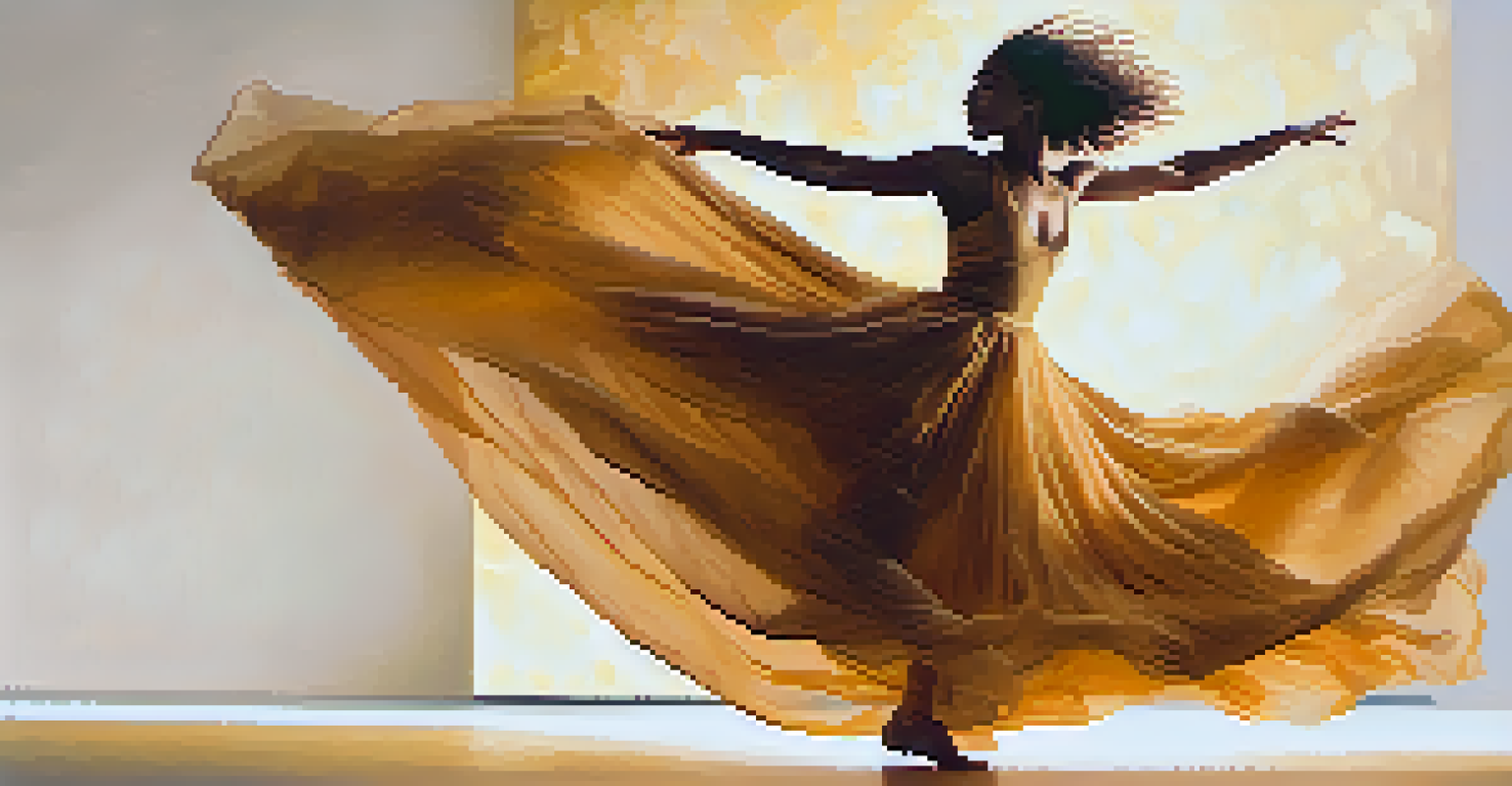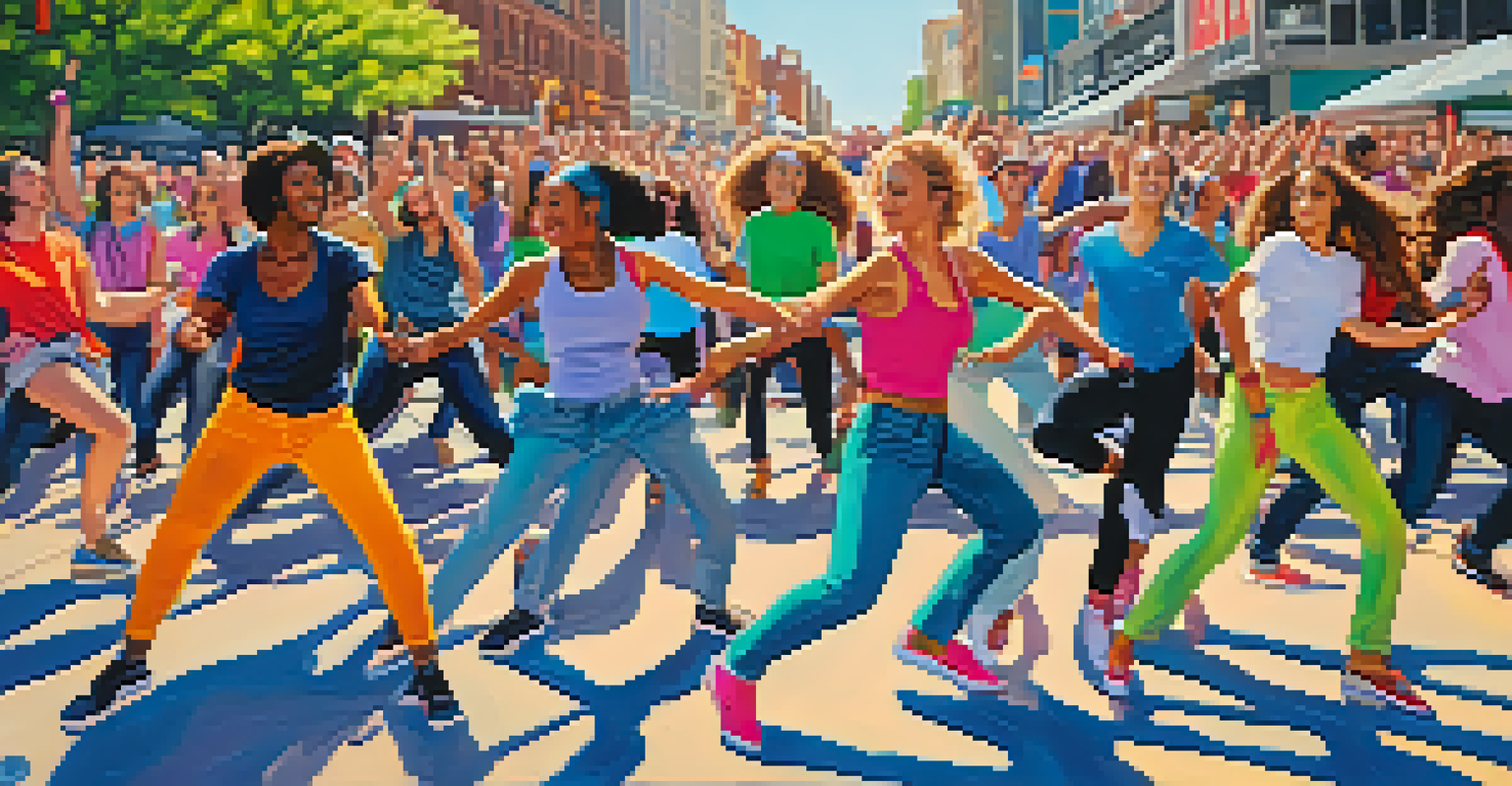Breaking Stereotypes: Dance as a Tool for Gender Equality

Understanding the Power of Dance in Culture
Dance has always been a profound form of expression, transcending boundaries and cultures. It serves as a mirror to society, reflecting its values and beliefs, including gender roles. Historically, many dance styles have been associated with specific genders, often limiting participation based on outdated stereotypes.
Dance is the hidden language of the soul.
For instance, ballet has long been viewed as a feminine art form, while breakdancing is often associated with masculinity. These associations can discourage individuals from exploring their passion for dance or lead them to conform to societal expectations. By examining how dance reflects cultural norms, we can begin to understand its potential to reshape them.
The beauty of dance lies in its ability to connect people regardless of gender, allowing for a shared experience that can challenge and redefine these norms. Embracing diverse dance forms can foster a more inclusive environment where everyone feels free to express their identity.
Dance as a Medium for Self-Expression
Self-expression is a fundamental aspect of personal identity, and dance provides a unique platform for this. Through movement, dancers can communicate their thoughts, feelings, and experiences in ways that words sometimes fail. This expression can be especially empowering for marginalized genders, offering them a voice in a world that often tries to silence them.

Consider a contemporary dance piece that tells the story of a woman's journey overcoming societal expectations. Through powerful movements, the dancer conveys emotions of struggle and triumph, allowing the audience to connect deeply with her experience. Such performances not only highlight individual stories but also challenge conventional narratives about gender.
Dance Reflects and Shapes Culture
Dance serves as a reflection of societal values and has the potential to challenge and reshape outdated gender norms.
Moreover, dance encourages individuals to embrace their true selves, breaking down the walls of conformity. When people feel free to express themselves authentically, it fosters a sense of belonging and community, further promoting gender equality.
Challenging Gender Norms through Dance Education
Dance education plays a crucial role in shaping young minds and breaking stereotypes from an early age. By introducing children to various dance styles, educators can help dismantle the rigid gender roles that often dictate who can dance what. Co-ed dance classes, for example, allow students to learn from one another and appreciate diverse expressions of movement.
The dance is a poem of which each movement is a word.
When boys and girls dance together, they learn to respect and value each other's contributions, fostering collaboration over competition. This shared experience can help to dissolve preconceived notions about masculinity and femininity in dance. As students explore different styles, they can find their unique voices, regardless of societal expectations.
In essence, dance education can be a powerful tool for social change, equipping the next generation with the skills to challenge stereotypes and advocate for equality. By nurturing a love for dance that transcends gender boundaries, we pave the way for a more inclusive society.
The Role of Dance in Activism
Dance has a rich history intertwined with activism, serving as a powerful medium for social change. From flash mobs advocating for women's rights to choreographed protests addressing gender-based violence, dance can galvanize communities and raise awareness about critical issues. These movements not only highlight the importance of gender equality but also inspire collective action.
For example, the 'Dance for Equality' initiative unites dancers of all backgrounds to create performances that spotlight gender issues. Such events not only engage participants but also draw attention from the wider community, fostering conversations around equality. By harnessing the power of movement, activists can convey messages that resonate deeply with audiences.
Empowerment through Dance Education
Inclusive dance education promotes collaboration and respect among genders, helping to dismantle stereotypes from an early age.
Moreover, dance can act as a healing process for those affected by gender inequality, providing a safe space to express trauma and resilience. In this way, dance becomes not just a form of protest but also a pathway to greater understanding and solidarity.
The Impact of Social Media on Dance and Gender Equality
In today's digital age, social media has transformed the way we share and engage with dance. Platforms like Instagram and TikTok allow dancers to showcase their talent and challenge stereotypes on a global scale. As a result, diverse voices and styles are gaining visibility, promoting a more inclusive representation of dance.
Social media also fosters community-building, connecting dancers from different backgrounds who share a passion for equality. Dance challenges and collaborations often go viral, inspiring others to join in and share their stories. This ripple effect can amplify messages of gender equality, encouraging individuals to embrace their identities.
The accessibility of social media means that anyone can participate in the conversation around dance and gender, breaking down barriers that once existed. By leveraging these platforms, we can continue to push for progress and challenge outdated norms in the dance world and beyond.
Highlighting Female Choreographers and Dancers
While dance has historically been dominated by male figures, many female choreographers and dancers are now breaking through these barriers. Their innovative work not only showcases their talent but also provides powerful narratives that challenge traditional gender roles. By elevating their voices, we can inspire future generations of dancers to pursue their passions unapologetically.
For instance, choreographers like Crystal Pite and Akram Khan have redefined contemporary dance, infusing their work with themes of identity and social justice. Their creations often reflect the complexities of gender, encouraging audiences to rethink their perceptions. When women take the lead in choreography, it opens up new possibilities for storytelling and representation.
Social Media Amplifies Dance Voices
Platforms like Instagram and TikTok allow diverse dancers to challenge stereotypes, fostering a global conversation around gender equality.
Promoting female choreographers not only empowers women within the dance community but also sets a precedent for equality in other fields. Their success paves the way for a more balanced future, where talent is recognized regardless of gender.
The Future of Dance and Gender Equality
As we look to the future, the intersection of dance and gender equality continues to evolve. The growing awareness and discourse around gender issues are prompting dance communities to become more inclusive and diverse. This shift is essential for fostering an environment where everyone feels valued and empowered to express themselves through movement.
Innovative projects and collaborations that focus on inclusivity are emerging, encouraging dancers to explore styles and narratives that resonate with their experiences. By embracing diversity within the dance community, we can create a richer tapestry of movement that reflects the complexities of gender.

Ultimately, the future of dance holds immense potential for promoting gender equality. By challenging stereotypes and celebrating diverse voices, we can harness the transformative power of dance to inspire change and foster a more equitable society.